Find out how you can install efficient parking lot lights using the power of LED lights and PoE lighting systems.
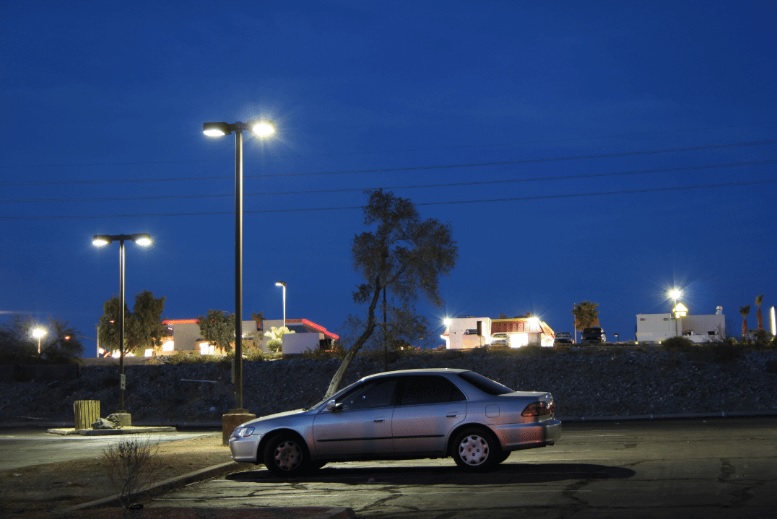
If you are a business owner or building manager, there is a good chance that you already know about the importance of properly lighting your property. But, lighting extends far beyond the confines of the building, it also applies to outdoor areas surrounding the building—including parking lots. Parking lot lighting is important for several reasons. First, all customers, visitors, and employees must have adequate lighting at night so they can find their vehicles. Proper lighting also gives people a sense of safety and can deter burglars from your parking lot.
In recent years, commercial lighting applications have quickly advanced to provide low-cost, low-energy consumption, environmentally sustainable lighting applications for commercial properties. These innovations also apply to parking lot lighting. Today, we are discussing some of the most important things you need to know before settling on a plan to install parking lot lights for your business. We’re talking about everything from LEDs lights to different PoE lighting fixtures. Let’s get started!
How Do Outdoor Parking Lot Lights Work?
Combining PoE lighting systems and LED lights creates consistent and durable parking lot lighting packages.
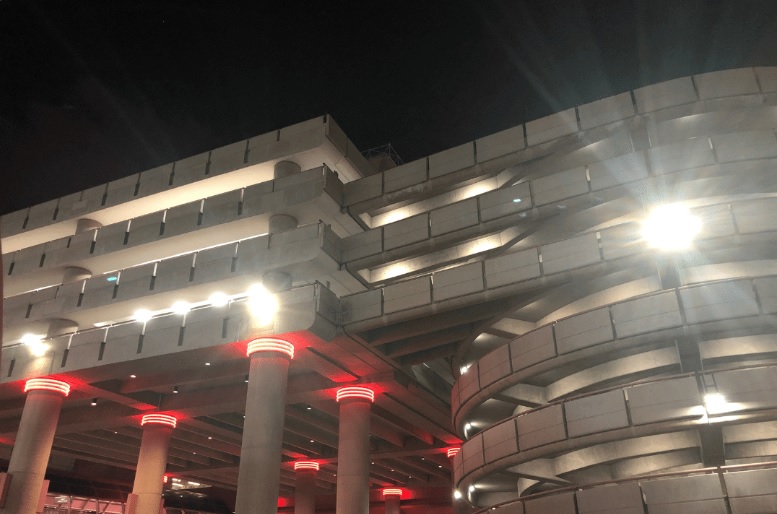
Installing parking lot lights used to be a much bigger hassle than it is today. Before the development of LED lights and PoE lighting systems, contractors had to install high-voltage cables connected to inefficient fluorescent or incandescent lights across the parking lot. This method of parking lot lighting was costly for both installation and operation. High voltage cables are expensive to install due to the inherent danger associated with high voltage electricity while older lighting methods use far more electricity than the currently preferred lighting method—LEDs.
LED lights have become so popular for both residential and commercial use because they offer increased lighting control while using far less electricity. LEDs—unlike fluorescent or incandescent lights—can also receive information that can alter the brightness, color, hue, and pattern of the lights. While not all of these features are useful for parking lot lighting, these features are one of the reasons that LEDs are the preferred choice for several different commercial lighting applications. Another key reason that LED lights are used for parking lots is their durability. Parking lot lights need to be high-performance and able to operate in all weather conditions for years to come.
To install LEDs for parking lot lighting, the system needs to operate via a PoE connection. PoE (Power over Ethernet) is a way to connect various internet-capable devices so that the devices can communicate with each other and with the BAS (Building Automation System). PoE cables also simultaneously supply power to the devices, meaning that additional cables are not needed for electricity.
In practice, PoE lighting systems can both control and power parking lot lights. LEDs powered by PoE also have the distinction of being low-voltage lighting applications. Since the LEDs operate on a far lower voltage than other outdated lighting systems it makes them the perfect pairing for PoE cables.
The reason that parking lot lighting requires an internet connection via PoE is to access automation capabilities from the BAS. One example of one of these automation capabilities is lighting sensors. By installing lighting sensors you can determine when the parking lot lights should turn on, off, dim, or brighten. Using the automation capabilities allowed by LEDs and ethernet cables you can create intuitive, optimized, and efficient lighting for your property.
What is the Right Height for Parking Lot Lights?
Now that we know how recent parking lot light installations work, it is time to explore different specifications for parking lot lights.

One of the major specifications that building owners need to determine before pursuing parking lot lighting is the height of the lights. Parking lot lights generally range anywhere from 12 to 20 feet high depending on the design of the parking lot. The most important factor here is the size of the parking lot. As a general rule, the larger the total area of the parking lot, the taller the poles for the parking lot lights need to be.
Another important factor to consider for the height of your parking lot is the surrounding area. While your parking lot requires substantial light to create a safe and illuminated environment for your business, it is important to consciously limit the amount of light that extends beyond your property. For example, if your business is near a residential area, it is important to make sure that you choose shorter poles that will not cause glare for the surrounding area. If your business is far away from other properties—like in an industrial park, for example, you can afford to install taller pole lights.
How Many Light Poles Are Needed for Parking Lots?
The number of light poles and their placement is key for proper illumination.
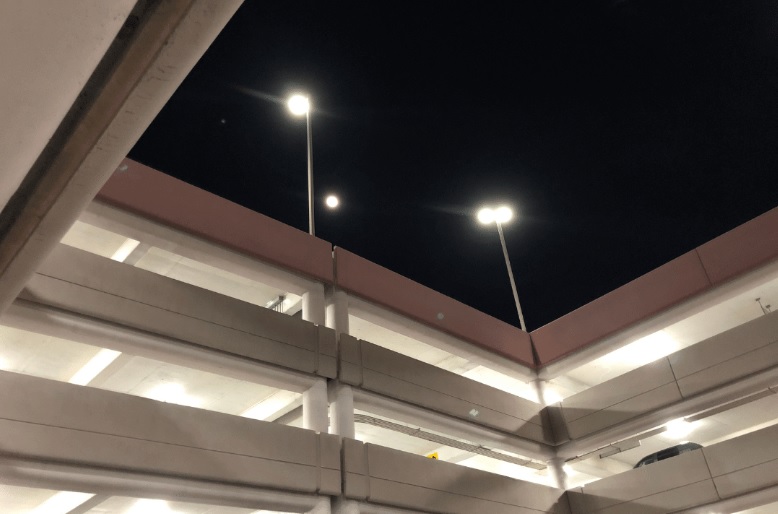
Just like with the previous section on light pole height, the number of light poles you will need for your parking lot will depend on the size and location of the lot. For example, If you have a very large parking lot that allows for 20ft light poles, you won’t need to use as many lights to reach every corner of the parking lot. On the other hand, if your parking lot is smaller or in a densely populated area, you will need to have more light poles spaced closer together.
What are Beam Angles and Which One is Right for My Business?
After the number of poles and the height is established, it is time to calculate the right beam angle for your lighting fixtures.
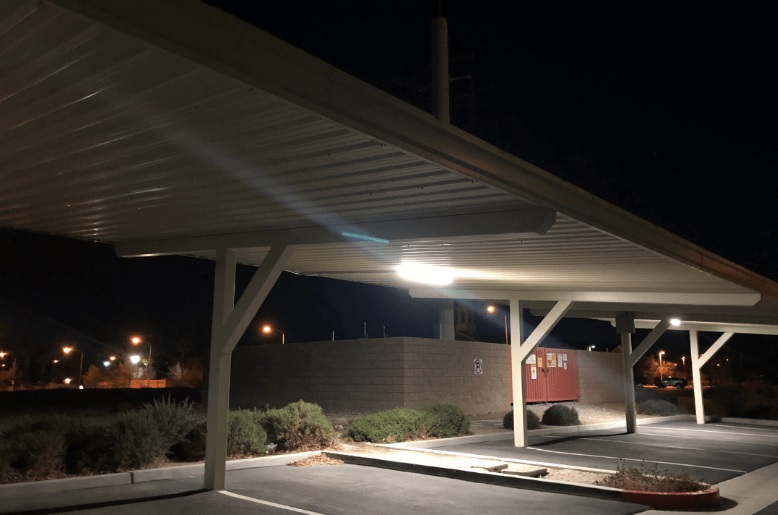
Now that we’ve learned a little bit about what determines the height, spacing, and the number of light poles for parking lot lighting applications, it is time to discuss the beam angle. Before we can really dive in, we need to define beam angles.
The beam angle determines which angle the light from the pole is directed across the parking lot. While it may seem to the casual observer that all of the lights in a parking lot are shining at the same angle, they are actually carefully positioned to deliver an optimum amount of light. To properly light the whole parking lot, contractors will install any of the following beam angle-specific lights:
- Type III Beam – Creates a lighting angle that projects in front and to the sides of the light pole. This light angle is most commonly employed at the edge of a parking lot or when poles are positioned back to back. The Type III beam angle is perfect for smaller parking lots.
- Type IV Beam – This type of light projects forward and in a circular shape. This beam angle is best used to illuminate central areas of a parking lot or an area where the light extends beyond the lot. A sidewalk next to a parking lot is a great example of when businesses need light beyond just the lot.
- V Beam – A V beam is a beam angle that illuminates the circular area surrounding the light pole. The light intensity in a V beam remains the same throughout the lit area. These lights are best used at central points in very large parking lots.
While planning out the parking lot lighting businesses, electricians, and contractors need to work together to decide what is the best lighting angle for each pole designated for the project. Once the best light angles for each individual lighting fixture are established, there are only a few more steps to tackle before you have accurately planned out the ideal setup for your parking lot lighting.
Choosing the Right Lumens for Your LEDs?
Lumens are a measurement of the brightness of an LED light fixture.
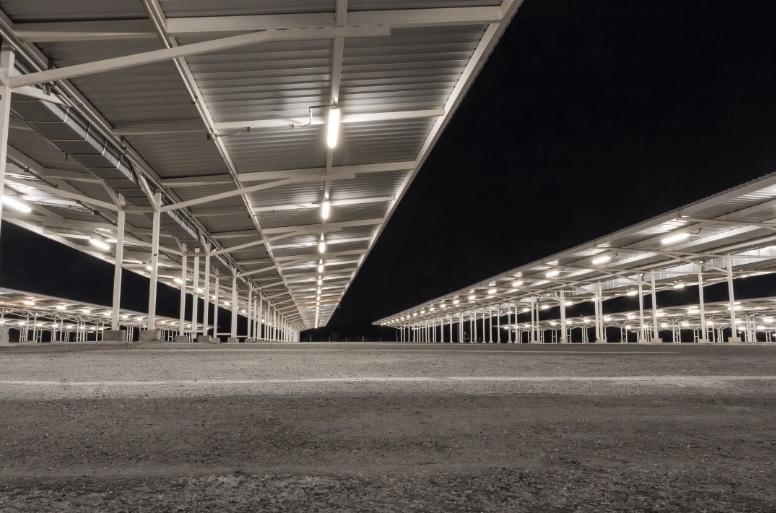
When you purchase the lights required for the parking lot, it is super important to pay extra special attention to the lumens. Lumens, not wattage, determine the lighting output for any LED. Using the decisions we’ve previously discussed, you can calculate the brightness required by every light pole to properly light the whole parking lot. The combination of the lumens and the chosen light angle should sufficiently illuminate every parking space in the lot.
Are Light Sensors Necessary for Parking Lots?
For the most efficient parking lot lighting, light sensors are necessary.
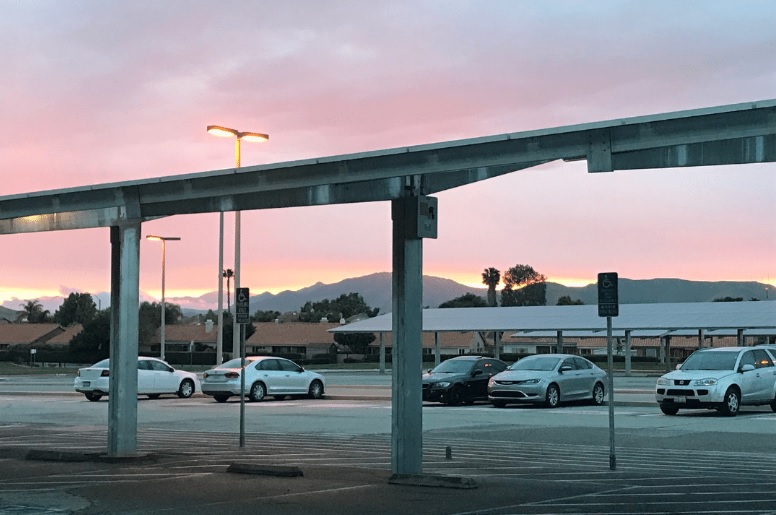
Since LED lights connected by PoE cables can receive information from other devices and operating systems, it means that your parking lot lights can automatically communicate with light sensors. Light sensors measure the amount of natural light coming from the sun to dictate the brightness of the parking lot lights. In practice, this means that lights will slowly increase in brightness as the sun sets and decrease the brightness as the sun rises.
While timers can achieve the same effect, sensors can factor in changes in weather conditions and other factors that affect sunlight. This ability makes light sensors an environmentally friendly and fully automated addition to parking lots. So, are lighting sensors necessary? Not exactly—but they are necessary to optimize your parking lot lighting and conserve as much energy as possible.
And there you have it—everything you need to know about parking lot lights. If your business is looking to upgrade, replace, or install new lights for a parking lot, be sure to keep these factors in mind as your project begins. Working along with a contractor and electrician, you’ll be on your way to a robust and sustainable lighting package for your parking lot.